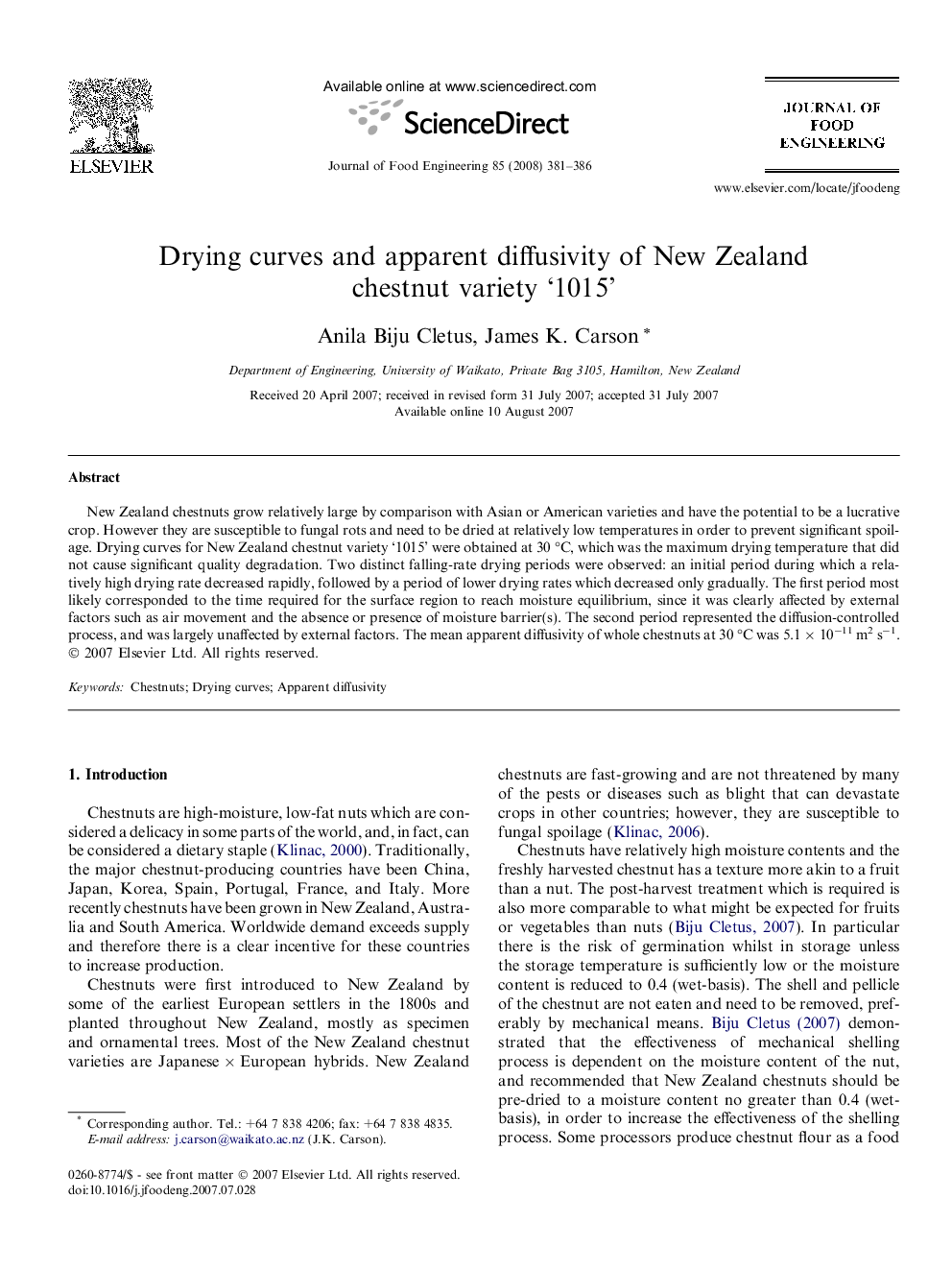| Article ID | Journal | Published Year | Pages | File Type |
|---|---|---|---|---|
| 225448 | Journal of Food Engineering | 2008 | 6 Pages |
New Zealand chestnuts grow relatively large by comparison with Asian or American varieties and have the potential to be a lucrative crop. However they are susceptible to fungal rots and need to be dried at relatively low temperatures in order to prevent significant spoilage. Drying curves for New Zealand chestnut variety ‘1015’ were obtained at 30 °C, which was the maximum drying temperature that did not cause significant quality degradation. Two distinct falling-rate drying periods were observed: an initial period during which a relatively high drying rate decreased rapidly, followed by a period of lower drying rates which decreased only gradually. The first period most likely corresponded to the time required for the surface region to reach moisture equilibrium, since it was clearly affected by external factors such as air movement and the absence or presence of moisture barrier(s). The second period represented the diffusion-controlled process, and was largely unaffected by external factors. The mean apparent diffusivity of whole chestnuts at 30 °C was 5.1 × 10−11 m2 s−1.
